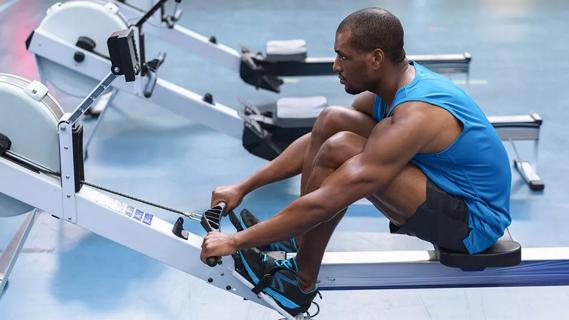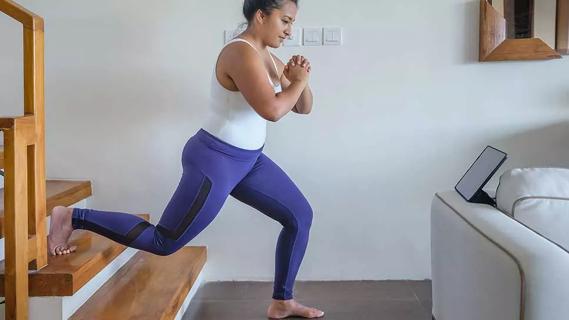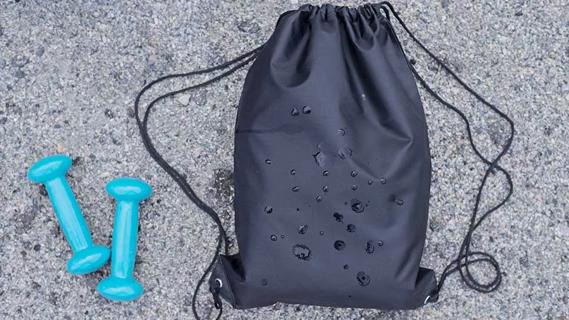Bad habits can derail a good workout and even cause damage

No matter what your gender or age, lifting weights is a great way to increase your resting heart rate, lower body fat, improve balance and motor coordination, and enhance joint stability. For a total body workout, it’s recommended lifting weights for 20 minutes to 30 minutes three days a week.
Advertisement
Cleveland Clinic is a non-profit academic medical center. Advertising on our site helps support our mission. We do not endorse non-Cleveland Clinic products or services. Policy
However, it’s easy to make common mistakes that can cause injuries or delay the results you hope to achieve. Exercise physiologist Christopher Travers, MS, breaks down common mishaps to avoid while you’re lifting weights.
It’s a natural inclination. Holding your breath while doing anything strenuous is something most of us have experienced. But Travers explains why this is potentially harmful. “Holding your breath as you’re lifting weights can lead to a rapid increase in your blood pressure,” he says. In some cases, this can cause a hernia and in more extreme cases, you can even lose consciousness.
The best way to make sure you breathe steadily during strength training is to breathe out (or exhale) when you exert the most effort, and breathe in (or inhale) when you return to your original resting point. Exhale when lifting; inhale when returning to start.
This technique will help you better control your blood pressure.
As you begin strength training, you’ll notice your muscles get sore after each session — at least you should experience some muscle soreness if you’re pushing your muscles to grow. Travers explains that the soreness is a good thing. “This is because as you lift, you’re causing microscopic tears in your muscles and damaging the tissue,” he says, and this is what builds muscle.
Advertisement
But it’s important to allow for adequate rest between workouts. “You have to allow those tissues time to recover before exercising them again,” says Travers.
Sometimes you may find your muscles are most sore a day after a good workout. So it’s a good rule of thumb to allow that particular muscle group to rest for 48 hours to give your muscles time to recover between workouts. For example, if you lift weights on Monday morning, workout again on Wednesday morning.
Travers says, “Working the same body parts on consecutive days over and over can lead to overuse injuries such as tendinitis and tendinosis.” Always vary your workout. For example, add in cardio-only days between strength training sessions.
Using improper form and technique during resistance training won’t yield any beneficial results — and may even lead to an injury.
If you’re just getting started, work with a fitness specialist who is familiar with proper weight training techniques and can help you find the right weight for your fitness level. If you’re concerned about exposure to COVID-19, many fitness clubs offer virtual fitness training right now.
“Even if you’re more experienced, it doesn’t hurt to schedule a session with a fitness specialist so they can double-check your form and identify any adjustments you may need to make,” says Travers.
Finally, listen to your body. Travers reminds “You will feel sore after lifting weights — that’s part of strength training. However, if you’re injured, don’t work out through the pain.”
While muscle soreness is normal, sharp pain is a sign that you may have overdone it. If your injury is causing you discomfort, take a break from lifting weights. “If it’s one or two days, you can chalk it up to muscle soreness. If your injury persists beyond that, seek medical attention,” says Travers.
Advertisement
Learn more about our editorial process.
Advertisement

The exercise — which you’ve probably been doing since grade school — can be intimidating, but proper form can help

Exercise lowers risk for heart conditions, improves mental health and reduces visceral fat that can compromise your organs

Ask questions, get referrals and consider if someone is a good fit for you and your fitness goals

Expect a few bumps in the road, work out for the right reasons and give yourself some credit

Jump into the swing of things to improve your coordination, burn calories and get your heart rate going

Walking with a weighted backpack is a low-impact, full-body workout that’s growing in popularity

A super high heart rate means you’re burning more than fat

Meet your workout goals by accounting for frequency, intensity, time and type

Type 2 diabetes isn’t inevitable with these dietary changes

Applying a hot or cold compress can help with pain